Reviews
Taylor Greeson
USA, 2008
Credits
Review by Katherine Follett
Posted on 05 May 2008
Source 35mm print
Categories The 2008 Independent Film Festival of Boston
The summer when Taylor Greeson was twelve years old, three things happened to him. First, he was ordained as a priest in the Mormon faith. Second, he lost his virginity to a much older man. Third, his brother was stabbed to death by an acquaintance. Years later, Greeson returned to his hometown to film a documentary about the events of that summer, often chronicling his own research and filming process along the way. As he mentions while filming, he could have made three separate films about the events, but he feels the three are inexorably linked because they all occurred at a single point in his life. In some ways, Greeson is right; this could have made three separate films, and I would argue that one of the incidents makes up the bulk of both the running time and the power of Meadowlark. But even if the three events could have been weighted differently, the result is still a moving personal story that manages to transcend simple self-examination and become about larger issues that touch everyone’s lives.
One thread, the loss of Greeson’s virginity to a 21-year old man, remains relatively separate from the other events. Greeson adamantly sees the sexual activity as a consensual relationship, rather than a molestation, and as such, the event serves as an awakening of his sexual identity as a gay man rather than as a trauma. And while the director’s sexuality does come to have some connection with the other events of the film, I found this to be the least integrated part of the documentary. The phone conversation with the (now regretful) man who had sex with him was enlightening as far as the relationship went, but basically unnecessary. The second thread, Greeson’s Mormonism, feels more interconnected to the rest of the film, but it acts as a background event. (Viewers unfamiliar with Mormonism should note that being “ordained into the priesthood†does not make one part of the clergy; all young men are ordained at about twelve years old, so becoming a “priest†functions something like confirmation or bar mitzvah.) Greeson’s Mormonism is strongly linked with his memories of his grandfather, who was both a pillar of the church and an almost central-casting-perfect cowboy, a human embodiment of both traditional morals and the immense Montana landscape that dominates almost all the action of the film. Greeson, unlike the rest of his family, felt particularly close to his grandparents and the traditional roles they represented. His relationship with his grandparents, their religion, and with the land around him comes to have powerful resonance when the documentary delves into the third and most wrenching event, the murder of Greeson’s brother Charlie.
I would argue that Charlie’s murder is the true focus of the film. As such, the documentary could have been stronger had Greeson re-edited his footage with this in mind, paring down the other events and focusing his ideas more on Charlie and how his murder affected Greeson’s life. But even without re-focusing the narrative, Greeson’s examination of Charlie’s life is still deeply moving. The narrative slowly closes in on the events of Charlie’s death, which occurred while the rest of the family was on vacation. No one is quite sure how or why it happened; a mysterious argument escalated into violence, with the murderer still claiming that the initial attack was an accident or self-defense. One theory points to physical evidence that Charlie and his killer may have had a homosexual relationship that contributed to the fight. Greeson takes an unflinching look at the police evidence, including the weapon, a bloodstained coat, even photos of the wounds. Finally, he travels to the prison to speak with the man who killed his brother.
Throughout the film, the tone is often one of grief, disconnection, and loss. Greeson films his mother as she struggles to support both his sister and the sister’s son. He records his sister blaming their mother for taking them on a trip during what turned out to be Charlie’s last days. He managed to shoot a few last blurry frames of his grandfather in his hospital bed shortly before he died. And quite often, the shots of the overwhelming emptiness of the Montana landscape dwarf any human figures, isolating them, swallowing them in sky and distance. The formidable beauty of the surroundings seems both awe-inspiring and chilling, especially the shots of the murder scene, a lonely hilltop just outside town, with little but wind and grass as witnesses to the last moments of Charlie’s life. The prison where Charlie’s murderer is housed also feels lifeless and isolating, but claustrophobic instead of agoraphobic. Here, Greeson sits down and talks with Charlie’s killer, in a conversation that necessarily remained unfilmed—the audio is pared with shots of the low, institutional prison hunkering in the massive landscape.
In these last scenes, sexuality, religion, and death finally converge around one issue—forgiveness. At the very end of the film, Greeson states that unlike his grandfather, whose church compels him to forgive and reassures him that justice will be done in the afterlife, he is not ready to forgive Charlie’s killer. But he does offer him some comfort, advising him to remember Charlie’s life rather than his death, to remember their relationship, whatever it was, rather than how it ended. Greeson manages to find humanity in a murderer, and to unflinchingly expose both his inability to forgive and his inability to prevent himself from seeking human connection with another person whose life was changed by the same tragedy. At the very end, isolation becomes a connection between two very unlikely people. It is a powerful, moving moment that stays with the viewer long after the film is over.
More The 2008 Independent Film Festival of Boston
-
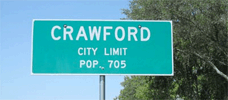
Crawford
2008 -

Vexille
2007 -

American Teen
2008 -

Mister Lonely
2007 -

Intimidad
2008 -
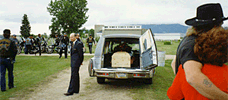
Meadowlark
2008 -

Second Skin
2008 -
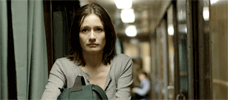
Transsiberian
2008 -

The Linguists
2008 -

Big Man Japan
2007 -
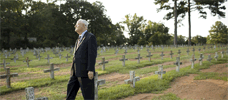
At the Death House Door
2008 -

The Beaver Trilogy
2000 -
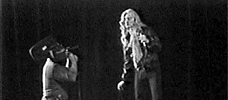
The Beaver Trilogy
2000 -

Nerdcore Rising
2008 -

Goliath
2008 -

The Tracey Fragments
2007 -

Saviours
2008 -

Medicine for Melancholy
2008 -

Severed Ways
2007 -

Not Your Typical Bigfoot Movie
2008 -

Not Your Typical Bigfoot Movie
2008 -

Jump!
2007 -

Encounters at the End of the World
2007
We don’t do comments anymore, but you may contact us here or find us on Twitter or Facebook.



